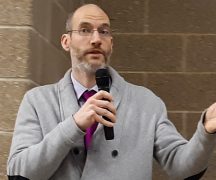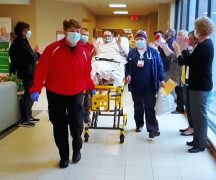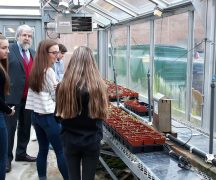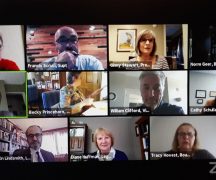Dear Mr. Scruci, Board Members, Principles Dever, Radabaugh, Kellough, Daney, and Karaffa
When the district announced students would be transitioning from remote learning to hybrid, there were many families, including ours, who were encouraged that the district might consider continuing a form of remote synchronous instruction for those in need of that option. During the board meeting on January 28th, Mr. Scruci went into great detail about how the Board tried to develop a third option beyond hybrid and NOVA (perhaps not considering the possibility of a transition to full-time, in-person learning for the 2020-2021 year, given prior reports of inadequate spacing/infrastructure). The only option reported was to pull an existing, full-time teacher out of their classroom to teach a grade-level remotely. Mr. Scruci stated that moving students from their current teachers would “disrupt those relationships”; that challenge would be “exacerbated by students having to have a new teacher, and teachers having new sets of students whom they have never met and not necessarily understanding what their needs are.” We understand these concerns, but we suggest that creative solutions could avoid this, while accommodating students who need a remote synchronous option.
There are multiple groups of students who need a remote synchronous option. One group is students who have specialized academic needs (e.g. some AP courses, all honors classes, DECA, music, and art are not available through NOVA). Another group is younger students who need more educational support than NOVA provides, but whose families are unable to provide this support. The elimination of a remote alternative, following the last two board decisions (without provision of accommodation), has penalized these groups. These students have been carefully adhering to CDC guidelines in their personal lives and choices; distancing, carefully wearing masks, and refraining from group social gatherings, extracurricular activities, and risker environments. Many families have members who are at significant risk if exposed to COVID in the community or through family members, and therefore have remained at home. Denying alternatives to these students, who do well with remote classes, places on them a significant burden, that of accepting high risk to their (and their families’) current and future health, or sacrificing their current academic path. Similarly to students on IEPs, these students also have specialized academic needs, which require accommodations. They should be afforded a remote option, while continuing their CDC aligned safety practices.
What is puzzling to us (or to anyone who has dealt with technology during this time), is why livestreaming a teacher’s lecture/class was not mentioned or possibly even considered. We, as parents, are asking you to consider this option. Livestreaming classes would accommodate both the families preferring in-person classes, and parents/students who do not feel safe in buildings with the planned densities of students and safety measures. It would also accommodate students who need to quarantine, so that they do not miss any instruction.
NOVA is not a viable alternative for many students. Some parents had no other option than to send kids back to hybrid, unless they were willing for them to sacrifice half of their current courses, or even lose college credit. Access to synchronous livestreamed instruction would allow all students in AP, honors, or elective courses to continue with and finish their current courses. Additionally, many working parents do not have the time available to help younger children with the asynchronous NOVA format. Livestreamed classes would be a far superior option for many families. Livestreaming would also accommodate those kids who are high risk, have family members who are deemed high risk, and, as mentioned above, would provide learning opportunities, other than homework packets, for those students in quarantine. Some of us have children enrolled at BGSU and attend classes that are both in-person and livestreamed (some call it concurrent or simultaneous teaching). This is common practice on campus and can be set up in a way that does not require expensive equipment. We questioned a BGSU employee tasked with setting up online capabilities for professors and student teachers. They agree that it is odd that BGCS doesn’t currently offer this option, even during hybrid. Like us, they indicated that it should not be a challenge for BGCS buildings from a technical standpoint. They pointed out that, in fact, BGCS has been livestreaming effectively for months. “They would just be adding a live audience in the room,” they said. Another friend questioned the board regarding this same issue and was told they can’t do it because “BGCS does not have the resources to do what BGSU is doing.” This cannot be accurate. Some of the professors are simply opening their laptops and starting a Zoom meeting. The BG teachers have been successful at setting up Google Meets and could continue. From a teaching standpoint, a synchronous lecture provision should be a reasonable accommodation, given the safety concerns. Public school teachers across the country have been teaching in this way since the beginning of the academic year.
We do, however, understand there would be drawbacks. It could be hard to make equal experiences for in-person and remote students in classes that require lab space, experiments and other hands-on activities, however assignment modifications could be considered. If students were required to attend only a limited number of in-person activities, that would still lower the risk and be acceptable for many. Some of these activities can be completed at home, particularly at the lower level. The students learning remotely may miss out on some of the fine nuances, but they would still be able to watch lessons, while remaining at home, should their individual circumstance or level of comfort/protection require it. With approximately 2 months left in the school year, this form of instruction would still be valuable. A significant number of us (parents, teachers, administrators) have used livestreaming technology to continue working from a place of safety and social distancing. We have been able to manage our jobs, keep business running and even support our children in their education. These uses of technology and flexibility are important skills for the future. Moreover, during the previous period of remote instruction, we know that some teachers have had students in their classrooms (special cases) while teaching live online classes. BGCS has provided remote synchronous instruction to particular students during the hybrid period. We are asking for a similar accommodation to be provided to our kids, who cannot or should not be in attendance, until the virus is under control. This same access should be afforded to all students. This does not mean the removal of the in-person option. Both are possible. In summary, a fairly simple and viable solution appears to be to allow students with at-risk family members, concerns for their own health, or who are otherwise unable or afraid to attend in-person at this time, access to remote livestreaming instruction, providing continuity to their education. We are very simply asking that the classes be live-streamed, with their familiar Google Meet platform, while the teacher instructs the in-person class.
Polly Miller, Aaron and Kirsty Sayer, Kevin and Noel McCluney, Jason Whitfield and Claire Silverman, Sandra Faulkner, Joshua Atkinson, Missy Stanton, Sherrie Hay-Sparks, Emily Anzicek, and Ambre and Matt Partin




